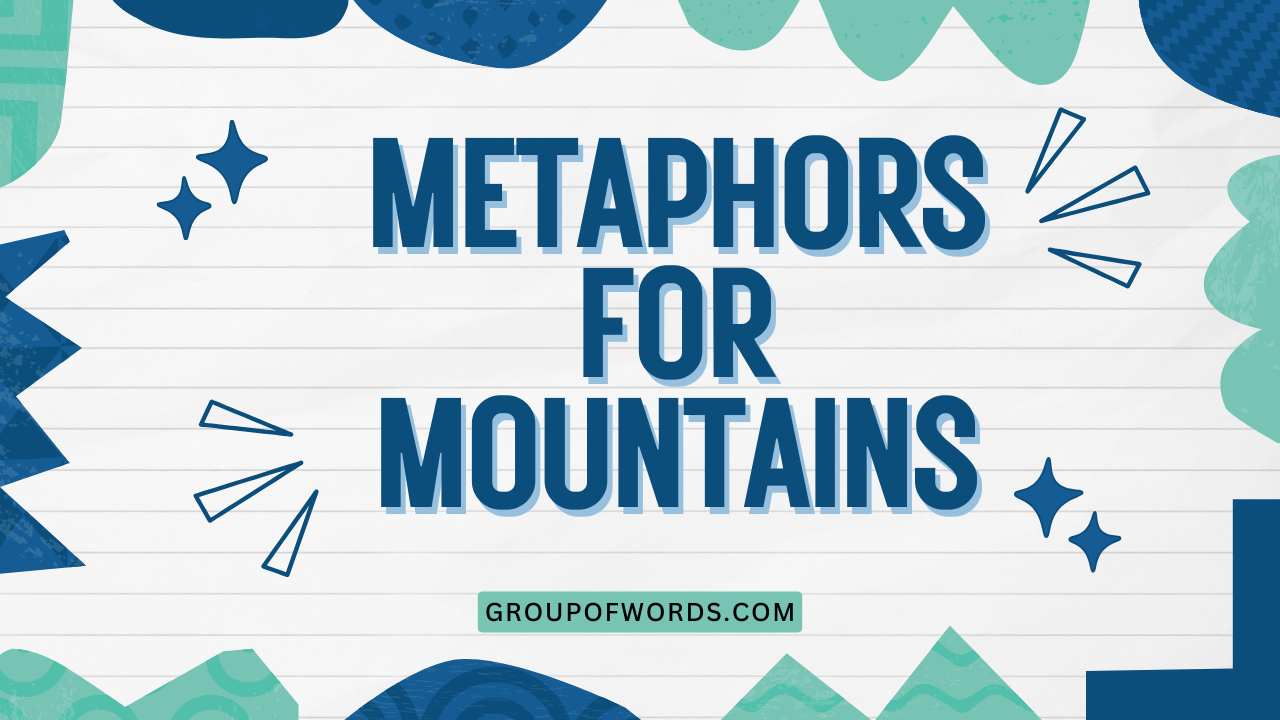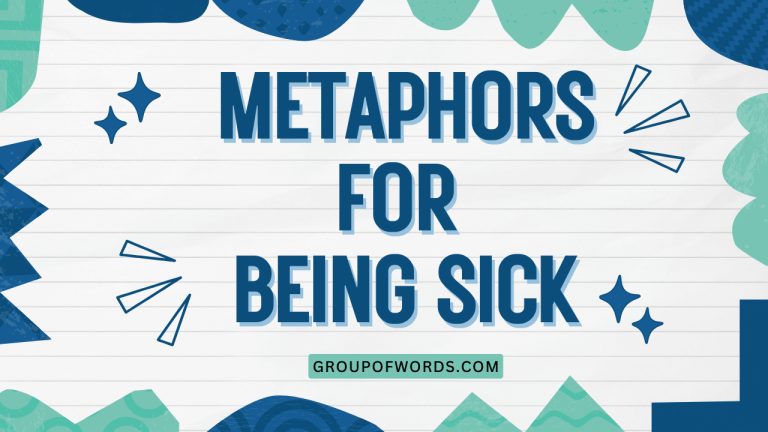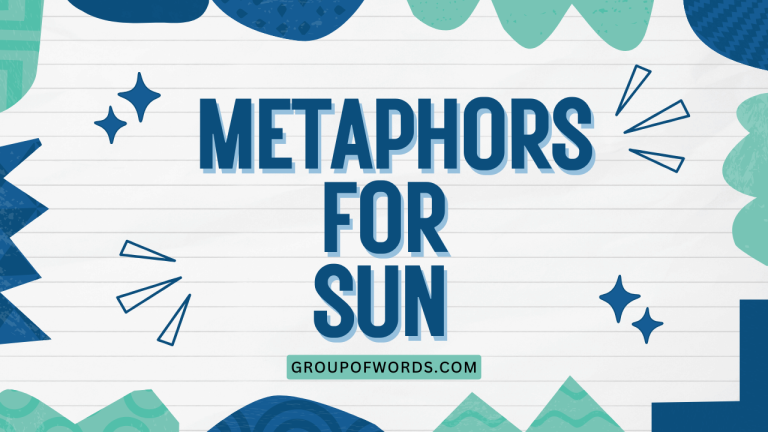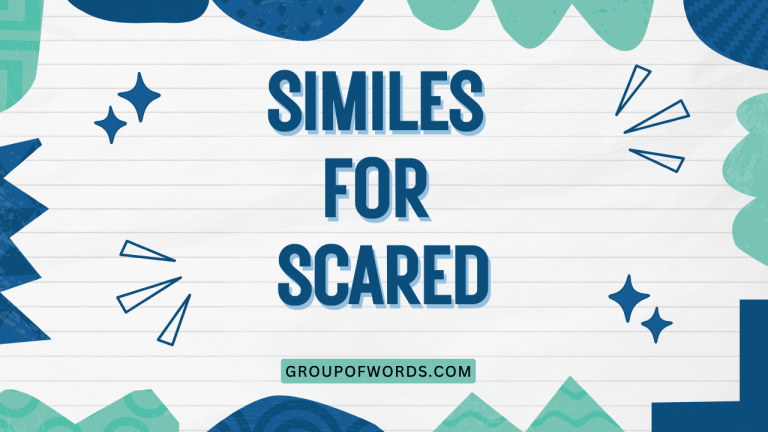Mountains of Meaning: Exploring Metaphors for Mountains
Metaphors are powerful tools in the English language, allowing us to understand complex concepts by relating them to more familiar ideas. When we talk about mountains, metaphors help us convey not just their physical presence, but also the feelings of awe, challenge, and endurance they evoke.
Understanding these metaphors enriches our comprehension of literature, poetry, and everyday conversation. This article delves into the world of metaphors for mountains, exploring their various forms and functions, and providing you with the knowledge and practice to use them effectively.
Whether you’re an English language learner, a student of literature, or simply someone who enjoys the beauty of language, this guide will help you ascend to new heights in your understanding of metaphors.
Table of Contents
- Introduction
- Defining Metaphors for Mountains
- Structural Breakdown of Mountain Metaphors
- Types and Categories of Mountain Metaphors
- Examples of Mountain Metaphors
- Usage Rules for Mountain Metaphors
- Common Mistakes with Mountain Metaphors
- Practice Exercises
- Advanced Topics: Extended Metaphors
- Frequently Asked Questions
- Conclusion
Defining Metaphors for Mountains
What is a Metaphor?
A metaphor is a figure of speech that directly compares two unrelated things, asserting that one is the other, to suggest a likeness or analogy between them. Unlike similes, which use words like “like” or “as” to make a comparison, metaphors make a direct comparison without these words. The purpose of a metaphor is to provide a new and insightful perspective on a subject, often by transferring qualities from one thing to another. Understanding metaphors is crucial for interpreting literature, poetry, and even everyday language, as they add depth and color to our communication.
Mountain Metaphors Explained
When we use mountains as metaphors, we’re typically drawing on the characteristics associated with mountains: their size, height, solidity, the challenge of climbing them, and the views from their peaks. A mountain can represent an obstacle, a challenge, a goal, a source of inspiration, or a symbol of strength.
The specific meaning of the metaphor depends on the context in which it’s used. For example, saying “He had a mountain of paperwork to complete” uses the mountain to represent a large and overwhelming task.
The inherent qualities of a mountain – its imposing size and the effort required to overcome it – are transferred to the concept of the paperwork.
Function of Mountain Metaphors
Mountain metaphors serve several key functions in language. Firstly, they simplify complex ideas by relating them to something tangible and easily understood. A difficult project becomes a ‘mountain to climb,’ instantly conveying the effort and challenge involved. Secondly, they add emotional impact to language. Describing someone’s grief as ‘a mountain of sorrow’ evokes a stronger emotional response than simply saying they are very sad. Thirdly, they create vivid imagery, allowing the audience to visualize and connect with the message more effectively. Finally, they can offer a fresh perspective, revealing new aspects of a subject by viewing it through the lens of a mountain’s characteristics. Thus, mountain metaphors enrich communication by adding layers of meaning and emotional resonance.
Structural Breakdown of Mountain Metaphors
Source and Target Domains
Every metaphor involves two key elements: the source domain and the target domain. The source domain is the concept we use to understand the other. In the case of mountain metaphors, the source domain is the mountain itself, with all its associated characteristics. The target domain is the concept we’re trying to explain or understand. For example, in the phrase “her debt was a mountain,” the mountain is the source domain, and the debt is the target domain. The metaphor transfers the qualities of a mountain—its size, weight, and difficulty to overcome—to the concept of debt, making it easier to grasp the magnitude and challenge of the financial burden.
Implicit vs. Explicit Metaphors
Metaphors can be either explicit or implicit. An explicit metaphor directly states the comparison, often using a form of the verb “to be.” For example, “The project was a mountain of challenges” is an explicit metaphor. An implicit metaphor, on the other hand, implies the comparison without directly stating it. For example, “He scaled the heights of his profession” is an implicit metaphor. Here, the act of “scaling” implies that the profession is being compared to a mountain, without explicitly stating the comparison. Implicit metaphors often require more interpretation from the audience but can be more subtle and powerful.
Types and Categories of Mountain Metaphors
Mountains as Obstacles and Challenges
One of the most common uses of mountain metaphors is to represent obstacles and challenges. This stems from the literal difficulty of climbing a mountain, which requires effort, perseverance, and strategic planning.
These metaphors often appear when discussing difficult projects, personal struggles, or professional hurdles. The imagery of a mountain emphasizes the scale and difficulty of the challenge, highlighting the need for resilience and determination.
For example, “facing a mountain of bureaucratic red tape” vividly conveys the frustration and complexity of dealing with excessive bureaucracy.
Mountains as Symbols of Strength and Stability
Mountains are also frequently used to symbolize strength, stability, and endurance. Their imposing size and solid structure naturally lend themselves to these associations.
A mountain can represent a person’s unwavering resolve, a company’s financial stability, or a nation’s enduring values. These metaphors emphasize the reliability and steadfastness of the subject.
For instance, describing a leader as “a mountain of strength in a time of crisis” underscores their ability to provide support and stability during a difficult period.
Mountains as Sources of Inspiration and Awe
Mountains are often seen as sources of inspiration and awe, inspiring feelings of wonder and reverence. Their majestic beauty and towering presence can evoke a sense of the sublime.
Metaphors in this category are used to describe experiences, places, or people that inspire deep admiration and respect. For example, describing a piece of music as “a soaring mountain of sound” conveys the grandeur and emotional impact of the composition.
Mountains as a Journey and Progress
The act of climbing a mountain can also serve as a metaphor for a journey or progress. This highlights the effort, challenges, and rewards associated with pursuing a goal.
The summit represents the achievement of the goal, while the climb itself symbolizes the process of overcoming obstacles and developing skills. These metaphors are often used to describe personal growth, career advancement, or the pursuit of knowledge.
“The road to success is a steep mountain” encapsulates the idea that achieving success requires hard work and perseverance.
Examples of Mountain Metaphors
Here are several examples of mountain metaphors, categorized by their type, to illustrate their diverse applications.
Examples: Mountains as Obstacles
The following table provides examples of mountains used as metaphors for obstacles. Each example highlights the challenging and often overwhelming nature of the situation being described.
| Metaphor | Explanation |
|---|---|
| The paperwork felt like a mountain. | The amount of paperwork was overwhelming and difficult to manage. |
| His debts were a mountain he couldn’t climb. | His debts were so large that he felt unable to repay them. |
| She faced a mountain of prejudice. | She encountered significant discrimination and bias. |
| The legal battle was a mountain of complexity. | The legal case was extremely complicated and difficult to navigate. |
| Their problems seemed like an insurmountable mountain. | Their problems appeared too difficult to overcome. |
| He had a mountain of excuses ready. | He had many excuses, suggesting he was trying to avoid responsibility. |
| The project faced a mountain of delays. | The project was significantly hindered by numerous delays. |
| She felt like she was carrying a mountain on her shoulders. | She felt burdened by a heavy responsibility or emotional weight. |
| The task ahead seemed like a steep mountain to climb. | The task was daunting and required a lot of effort. |
| They were confronted by a mountain of evidence. | They were faced with a large amount of compelling evidence. |
| The sheer volume of data was a mountain to analyze. | Analyzing the vast amount of data presented a significant challenge. |
| Their lack of resources was a mountain they couldn’t move. | Their insufficient resources presented an insurmountable obstacle. |
| The political opposition was a formidable mountain. | The political opposition posed a significant and difficult challenge. |
| The backlog of orders was a mountain that needed to be cleared. | Clearing the large number of pending orders was a major undertaking. |
| The learning curve was a steep mountain to ascend. | Mastering the new skills required a significant amount of effort and time. |
| Navigating the bureaucracy felt like climbing a never-ending mountain. | Dealing with the bureaucratic processes was a frustrating and seemingly endless task. |
| The competition was a towering mountain in the industry. | The competition was exceptionally strong and difficult to surpass. |
| Overcoming his fear was a personal mountain to conquer. | Facing and overcoming his fear was a significant personal challenge. |
| The mountain of medical bills seemed impossible to pay off. | The high cost of medical expenses was a substantial financial burden. |
| The complexity of the problem was a mountain that needed careful planning to navigate. | Solving the intricate problem required meticulous planning and effort. |
| The language barrier presented a mountain to overcome. | The difficulty in communication due to language differences was a significant challenge. |
| The amount of research required felt like scaling a vast mountain. | The extensive research needed was a daunting and time-consuming task. |
| The mountain of misinformation made it difficult to discern the truth. | The abundance of false information made it challenging to identify what was accurate. |
Examples: Mountains as Strength
This table illustrates how mountains are used as metaphors for strength and stability, highlighting the unwavering and reliable nature of the subject.
| Metaphor | Explanation |
|---|---|
| He was a mountain of strength for his family. | He provided unwavering support and stability for his family. |
| The company was a mountain of financial stability. | The company was financially secure and reliable. |
| Her faith was her mountain. | Her faith provided her with strength and stability. |
| The ancient traditions were a mountain of cultural identity. | The traditions were a strong and enduring part of the culture. |
| His principles were as solid as a mountain. | His principles were strong, unwavering, and reliable. |
| The community was a mountain of resilience in the face of adversity. | The community showed great strength and ability to recover from difficult situations. |
| Her determination was a mountain that could not be moved. | Her resolve was unshakeable and persistent. |
| The institution stood as a mountain of integrity. | The institution was known for its strong moral principles and honesty. |
| His leadership was a mountain of support for his team. | His leadership provided strong and reliable support for his team. |
| The constitution was a mountain of legal protection. | The constitution provided strong and steadfast legal safeguards. |
| Their love was a mountain, unshaken by time. | Their love was strong, enduring, and unaffected by the passage of time. |
| The organization was a mountain of resources for those in need. | The organization provided substantial and dependable resources to those who needed help. |
| His knowledge was a mountain of information. | He possessed a vast and comprehensive understanding of the subject. |
| The monument stood as a mountain of remembrance. | The monument served as a powerful and enduring symbol of memory and tribute. |
| Her spirit was a mountain of courage. | She possessed immense bravery and unwavering determination. |
| The treaty was a mountain of diplomatic achievement. | The treaty represented a significant and lasting accomplishment in international relations. |
| The scientific discovery was a mountain of intellectual advancement. | The discovery marked a substantial and enduring progress in scientific understanding. |
| The family’s bond was a mountain of unbreakable ties. | The family shared a strong and resilient connection that could not be broken. |
| The artwork was a mountain of creative expression. | The artwork showcased an extraordinary and powerful display of creativity. |
| His legacy was a mountain of lasting impact. | His contributions had a profound and enduring influence on the world. |
| The community center was a mountain of support for local families. | The community center provided strong and reliable assistance to families in the area. |
| The legal precedent was a mountain that guided future decisions. | The legal precedent served as a strong and influential guide for subsequent legal rulings. |
Examples: Mountains as Inspiration
This table presents examples of how mountains can be used metaphorically to represent inspiration and awe, highlighting the majestic and awe-inspiring qualities associated with mountains.
| Metaphor | Explanation |
|---|---|
| The music was a soaring mountain of sound. | The music was grand, powerful, and deeply moving. |
| Her artwork was a mountain of creativity. | Her artwork was incredibly imaginative and inspiring. |
| His speech was a mountain of eloquence. | His speech was beautifully crafted and deeply persuasive. |
| The view from the summit was a mountain of inspiration. | The view was breathtaking and filled with a sense of wonder. |
| The book was a mountain of knowledge. | The book was filled with profound insights and wisdom. |
| The dancer’s performance was a mountain of grace. | The dancer’s movements were elegant, fluid, and inspiring. |
| The poem was a mountain of emotion. | The poem evoked deep and powerful feelings. |
| Their love story was a mountain of romance. | Their love story was deeply romantic and inspiring. |
| The innovation was a mountain of progress. | The innovation represented a significant advancement. |
| The scientist’s discovery was a mountain of insight. | The discovery provided profound new understanding. |
| The architecture was a mountain of design. | The building showcased remarkable and innovative design. |
| The film was a mountain of storytelling. | The film presented a compelling and masterful narrative. |
| Her leadership was a mountain of vision. | Her leadership was characterized by clear and inspiring foresight. |
| The festival was a mountain of cultural richness. | The festival showcased a diverse and vibrant cultural experience. |
| His philanthropy was a mountain of generosity. | His charitable actions were exceptionally generous and impactful. |
| The project was a mountain of collaborative effort. | The project demonstrated a remarkable level of teamwork and cooperation. |
| The garden was a mountain of natural beauty. | The garden was exceptionally beautiful and inspiring. |
| The conference was a mountain of shared knowledge. | The conference facilitated a vast exchange of information and insights. |
| The exhibition was a mountain of artistic expression. | The exhibition displayed a diverse range of creative and inspiring artworks. |
| The humanitarian effort was a mountain of compassion. | The effort demonstrated profound empathy and care for others. |
| The community’s spirit was a mountain of collective pride. | The community exhibited a strong and shared sense of accomplishment and identity. |
| The speaker’s words were a mountain of inspiring wisdom. | The speaker conveyed profound and motivational insights. |
| The charity event was a mountain of community support. | The event showcased substantial backing and participation from the local community. |
Examples: Mountains as a Journey
The following table presents examples of mountains used as metaphors for journeys and progress, highlighting the effort, challenges, and ultimate rewards associated with achieving a goal.
| Metaphor | Explanation |
|---|---|
| The road to success is a steep mountain. | Achieving success requires hard work and perseverance. |
| Climbing the corporate ladder was a long mountain. | Advancing in the company required a sustained effort over time. |
| Her education was a mountain she was determined to climb. | She was committed to pursuing her education despite the challenges. |
| The project was a mountain of progress, one step at a time. | The project required consistent effort and incremental advancements. |
| His recovery was a slow and arduous mountain. | His recovery process was gradual and challenging. |
| Building a business is like climbing a mountain. | Starting and growing a business requires effort, resilience, and strategic planning. |
| The journey of self-discovery was a personal mountain. | Exploring and understanding oneself was a challenging and rewarding process. |
| Their relationship was a mountain of shared experiences. | Their relationship was built on a foundation of mutual growth and challenges. |
| The artist’s career was a mountain of creative exploration. | The artist’s career involved continuous experimentation and innovation. |
| The team’s collaboration was a mountain of teamwork. | The team’s success depended on their ability to work together effectively. |
| The research project was a mountain of intellectual endeavor. | The research required extensive study and critical thinking skills. |
| The politician’s rise to power was a carefully planned mountain. | The politician’s ascent involved strategic decisions and calculated moves. |
| The athlete’s training was a relentless mountain. | The athlete’s preparation demanded constant and rigorous effort. |
| The scientist’s quest for knowledge was a lifelong mountain. | The scientist dedicated their life to pursuing knowledge and understanding. |
| The activist’s fight for justice was an unyielding mountain. | The activist’s struggle for equality and fairness was persistent and unwavering. |
| The innovator’s journey was a mountain of groundbreaking ideas. | The innovator consistently generated new and transformative concepts. |
| The entrepreneur’s venture was a mountain of calculated risks. | The entrepreneur’s undertaking involved strategic risk-taking and innovation. |
| The community’s development was a collaborative mountain. | The community’s progress required collective effort and shared goals. |
| The organization’s growth was a sustained mountain of progress. | The organization’s development involved continuous effort and steady advancement. |
| The author’s writing process was a challenging mountain to climb. | Completing the book required overcoming numerous creative and logistical obstacles. |
| The student’s academic journey was like scaling a mountain, step by step. | The student progressed through their studies with consistent effort and determination. |
| The musician’s path to mastery was a long and winding mountain. | Achieving proficiency in music demanded persistent practice and dedication. |
| The dancer’s evolution was a mountain of practice and dedication. | The dancer’s improvement required unwavering commitment and rigorous training. |
Usage Rules for Mountain Metaphors
Appropriateness and Context
The effectiveness of a mountain metaphor depends heavily on the context in which it’s used. Consider your audience and the overall tone of your communication.
In formal writing, it’s important to use metaphors sparingly and ensure they are clear and relevant. In more informal settings, you have greater freedom to experiment with more creative and expressive metaphors.
Always ensure that the metaphor enhances understanding rather than confusing the audience.
Cultural Sensitivity
Be mindful of cultural differences when using mountain metaphors. Different cultures may have varying associations with mountains.
What might be seen as a symbol of strength in one culture could be viewed differently in another. Research and consider the cultural context to avoid unintentional offense or misinterpretation.
For example, in some cultures, mountains are sacred and should be treated with respect, so using them lightly in a metaphor might be inappropriate.
Avoiding Clichés
Overused metaphors, or clichés, can weaken your writing. Phrases like “mountain to climb” or “peak performance” have become so common that they often lose their impact.
Strive to create fresh and original metaphors that offer a new perspective. Instead of saying “It was a mountain to climb,” you could say “The task loomed like a jagged, unforgiving peak,” which is more evocative and engaging.
Always aim for originality to keep your language vibrant and impactful.
Common Mistakes with Mountain Metaphors
Mixed Metaphors
A mixed metaphor occurs when you combine two or more incompatible metaphors in the same sentence or passage. This can create confusion and undermine the clarity of your message.
For example, saying “He was a mountain of strength navigating the turbulent sea of life” mixes the mountain metaphor (strength) with a sea metaphor (turbulent life), creating a nonsensical image. To avoid mixed metaphors, carefully consider the individual components of your metaphor and ensure they are logically consistent.
Inappropriate Use
Using a mountain metaphor in an inappropriate context can diminish its impact or even make your communication seem insensitive. For example, describing a minor inconvenience as “a mountain of trouble” exaggerates the situation and trivializes the challenges faced by those dealing with genuine hardships.
Ensure that the scale of the metaphor aligns with the scale of the subject you’re describing. If the situation is relatively minor, opt for a less dramatic metaphor.
Here’s a table demonstrating common mistakes and corrections:
| Incorrect | Correct | Explanation |
|---|---|---|
| The project was a mountain to climb, and we hit the ground running. | The project was a mountain to climb, and we prepared diligently for the ascent. | Avoid mixing the mountain metaphor with a running metaphor. |
| Her sadness was a mountain of a minor inconvenience. | Her sadness was a deep valley of despair. | Ensure the scale of the metaphor matches the scale of the subject. |
| He was a mountain of strength swimming in a sea of opportunity. | He was a mountain of strength, a steadfast presence in the community. | Avoid mixing metaphors from different domains that create illogical images. |
| The problem was a mountain, so we nipped it in the bud. | The problem was a mountain, so we tackled it with strategic planning. | Ensure the action aligns with the scale of the mountain metaphor. |
| The task was a mountain of a molehill. | The task was a minor challenge, easily overcome. | Avoid contradictory metaphors that undermine the message. |
Practice Exercises
Exercise 1: Identifying Metaphors
Identify the mountain metaphors in the following sentences and explain what they mean.
| Question | Answer |
|---|---|
| 1. The company’s debt was a mountain that threatened to bury them. | The company’s debt was very large and posed a significant risk of financial ruin. |
| 2. He scaled the mountain of his ambition with relentless determination. | He pursued his ambitious goals with unwavering effort and persistence. |
| 3. The project’s complexity was a mountain of intricate details. | The project involved a large number of complicated and interconnected elements. |
| 4. Her resilience was a mountain in the face of adversity. | Her ability to withstand and recover from difficult situations was strong and unwavering. |
| 5. The legal battle was a mountain they had to overcome. | The legal dispute was a significant challenge that required considerable effort to resolve. |
| 6. His knowledge on the subject was a mountain. | He had extensive and comprehensive knowledge on the subject. |
| 7. The sheer amount of data was a mountain to process. | Processing the vast amount of data presented a significant challenge. |
| 8. She carried a mountain of responsibility on her shoulders. | She felt burdened by a heavy and significant amount of responsibility. |
| 9. The task ahead seemed like a steep mountain to climb. | The task was daunting and required a lot of effort. |
| 10. Their love was a mountain, unshaken by time. | Their love was strong, enduring, and unaffected by the passage of time. |
Exercise 2: Creating Metaphors
Create a mountain metaphor for each of the following concepts.
| Concept | Metaphor |
|---|---|
| 1. A difficult exam | The exam was a towering mountain of knowledge, intimidating and challenging to conquer. |
| 2. A successful career | Her successful career was a mountain built on years of hard work and dedication. |
| 3. Overcoming a personal fear | Conquering his fear was like scaling a personal mountain, each step a victory. |
| 4. Writing a novel | Writing the novel felt like climbing a vast, unexplored mountain range. |
| 5. A strong friendship | Their friendship was a mountain of mutual support, providing strength and stability. |
| 6. Starting a new business | Starting the new business was akin to ascending a steep and unpredictable mountain. |
| 7. Raising a family | Raising a family was a rewarding yet challenging mountain to navigate. |
| 8. A long-term project | The long-term project appeared as a daunting mountain range on the horizon. |
| 9. Developing a new skill | Developing the new skill was like climbing a technical mountain, requiring precise movements. |
| 10. A difficult decision | Making the difficult decision was akin to standing at the foot of a formidable mountain, unsure of the path. |
Exercise 3: Correcting Mistakes
Identify and correct the mixed or inappropriate metaphors in the following sentences.
| Question | Answer | Corrected Sentence |
|---|---|---|
| 1. The problem was a mountain, so we nipped it in the bud. | Mixed metaphor: Inconsistent imagery. | The problem was a mountain, so we tackled it with strategic planning. |
| 2. Her sadness was a mountain of a minor inconvenience. | Inappropriate use: Exaggerates the situation. | Her sadness was a deep valley of despair. |
| 3. He was a mountain of strength swimming in a sea of opportunity. | Mixed metaphor: Inconsistent imagery. | He was a mountain of strength, a steadfast presence in the community. |
| 4. The project was a mountain to climb, and we hit the ground running. | Mixed metaphor: Inconsistent imagery. | The project was a mountain to climb, and we prepared diligently for the ascent. |
| 5. The task was a mountain of a molehill. | Contradictory: Undermines the message. | The task was a minor challenge, easily overcome. |
| 6. The politician was a mountain of integrity, sailing smoothly through the storm. | Mixed metaphor: Combining incompatible images. | The politician was a mountain of integrity, standing firm against the storm. |
| 7. The company’s success was a mountain, but they quickly turned the tide. | Mixed metaphor: Inconsistent imagery. | The company’s success was a steadily growing mountain, built on solid foundations. |
| 8. His determination was a mountain, so he jumped the gun. | Mixed metaphor: Inconsistent imagery. | His determination was a mountain, so he methodically planned his ascent. |
| 9. The challenge was a mountain, but they navigated it with a silver lining. | Inconsistent: Confusing imagery. | The challenge was a mountain, but they skillfully navigated its treacherous slopes. |
| 10. Her knowledge was a mountain, and she spread her wings to fly. | Mixed metaphor: Combining incompatible images. | Her knowledge was a mountain, and she shared its wisdom with others. |
Advanced Topics: Extended Metaphors
Developing Extended Metaphors
An extended metaphor is a metaphor that is sustained over several lines or even an entire piece of writing. It allows for a deeper exploration of the comparison, creating a richer and more complex understanding.
To develop an extended mountain metaphor, start with
a basic comparison and then expand upon it by adding more related details and imagery. For example, if you’re comparing a difficult project to a mountain, you could extend the metaphor by describing the various challenges as different terrains on the mountain, the team members as climbers, and the successful completion of the project as reaching the summit.
The key is to maintain consistency and relevance throughout the extended metaphor.
Here’s an example of developing an extended metaphor:
Basic Metaphor: The project was a mountain.
Extended Metaphor: The project was a formidable mountain, its peak shrouded in mist and uncertainty. Our team, the climbers, gathered at its base, each carrying their own set of skills and experiences. The initial ascent was steep, filled with unexpected obstacles – rocky deadlines, slippery data, and treacherous communication gaps. As we climbed higher, the air thinned, and the pressure mounted. But with each challenge overcome, each crevasse bridged, we grew stronger and more determined. Finally, after months of relentless effort, we reached the summit, the panoramic view of success stretching out before us, a testament to our collective resilience and unwavering commitment.
Analyzing Metaphors in Literature
Mountain metaphors are frequently used in literature to add depth and symbolism to the narrative. When analyzing these metaphors, consider the following:
- Identify the metaphor: Pinpoint the specific instances where mountains are used metaphorically.
- Determine the source and target domains: Identify what the mountain is being compared to and what qualities are being transferred.
- Analyze the context: Consider the surrounding text and the overall themes of the work.
- Interpret the meaning: Explain what the metaphor contributes to the reader’s understanding of the characters, plot, or themes.
- Evaluate the effectiveness: Assess how well the metaphor works in conveying its intended meaning and enhancing the literary work.
For example, in many works of literature, mountains represent challenges that characters must overcome to achieve personal growth or success. Analyzing these metaphors can provide valuable insights into the characters’ motivations, the themes of perseverance and resilience, and the overall message of the story.
Frequently Asked Questions
What is the difference between a metaphor and a simile?
A metaphor directly compares two things by stating that one is the other, while a simile uses “like” or “as” to make a comparison. For example, “He is a mountain of strength” (metaphor) versus “He is as strong as a mountain” (simile).
How can I avoid using clichés in my writing?
To avoid clichés, strive for originality and creativity. Think about the specific qualities you want to convey and try to find fresh and unexpected ways to express them.
Use a thesaurus to find alternative words and phrases, and experiment with different combinations to create unique metaphors.
Why are metaphors important in communication?
Metaphors enhance communication by simplifying complex ideas, adding emotional impact, creating vivid imagery, and offering fresh perspectives. They make language more engaging and memorable.
How do I identify a mixed metaphor?
A mixed metaphor combines two or more incompatible metaphors in the same sentence or passage. Look for inconsistencies in the imagery and ensure that the components of the metaphor are logically consistent.
Can a mountain metaphor be used in a negative context?
Yes, mountain metaphors can be used in a negative context to represent obstacles, challenges, or overwhelming burdens. The specific meaning depends on the context and the qualities being transferred.
How do cultural differences affect the interpretation of metaphors?
Different cultures may have varying associations with mountains. What might be seen as a symbol of strength in one culture could be viewed differently in another.
It’s important to consider the cultural context to avoid unintentional offense or misinterpretation.
What are some common themes associated with mountain metaphors?
Common themes include challenges, obstacles, strength, stability, inspiration, awe, journeys, progress, and personal growth.
How can I improve my ability to create effective metaphors?
Practice regularly, read widely, and pay attention to the metaphors used by others. Experiment with different combinations of words and images, and seek feedback from others on the clarity and effectiveness of your metaphors.
What role do mountain metaphors play in poetry?
In poetry, mountain metaphors can evoke strong emotions, create vivid imagery, and add layers of meaning to the poem. They can symbolize both internal and external struggles, as well as moments of transcendence and inspiration.
Is it okay to use multiple metaphors in a single piece of writing?
Yes, it is acceptable to use multiple metaphors in a single piece of writing, but it is important to ensure that they are consistent and do not create confusion. Each metaphor should serve a specific purpose and enhance the overall message.
Conclusion
Metaphors for mountains provide a rich and versatile tool for expressing complex ideas and emotions. By understanding the different types of mountain metaphors, their structural components, and the rules for their effective use, you can enhance your communication skills and deepen your appreciation for language.
Whether you’re describing a challenging project, a source of inspiration, or a personal journey, mountain metaphors offer a powerful way to convey your message with clarity, impact, and creativity. Embrace the challenge of crafting original and meaningful metaphors, and watch your language skills reach new heights.






